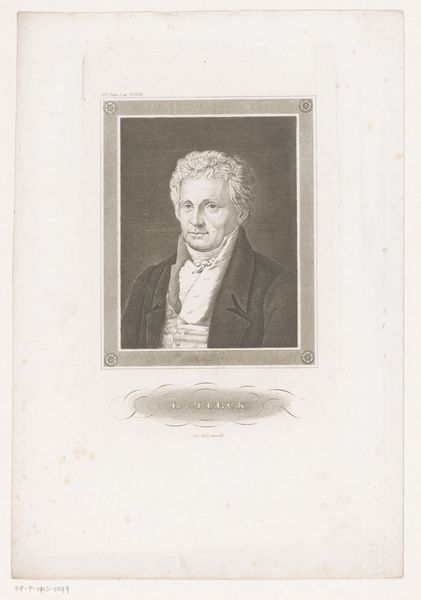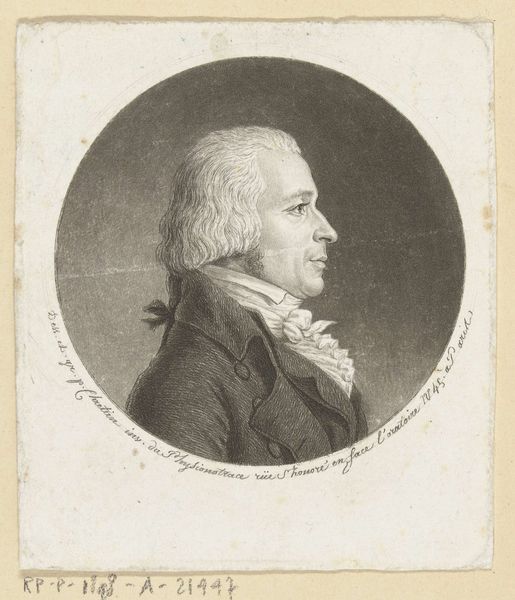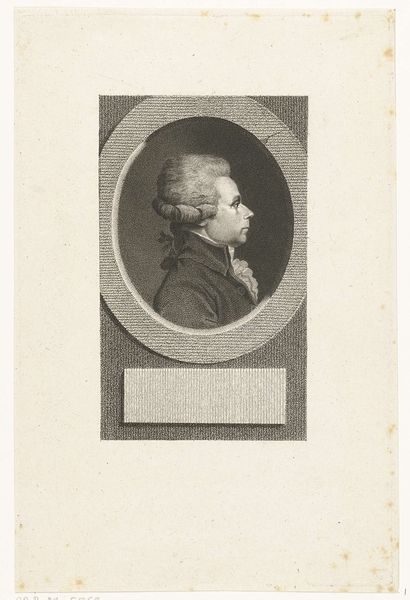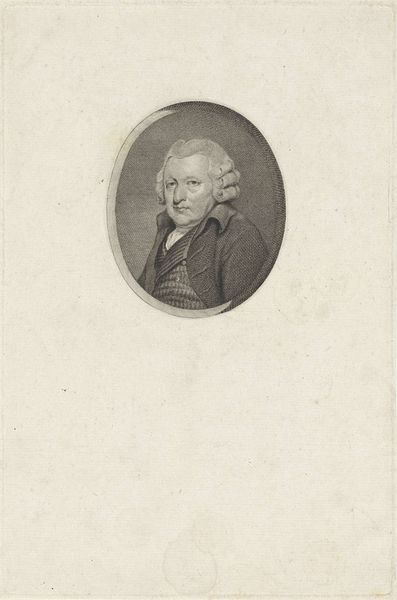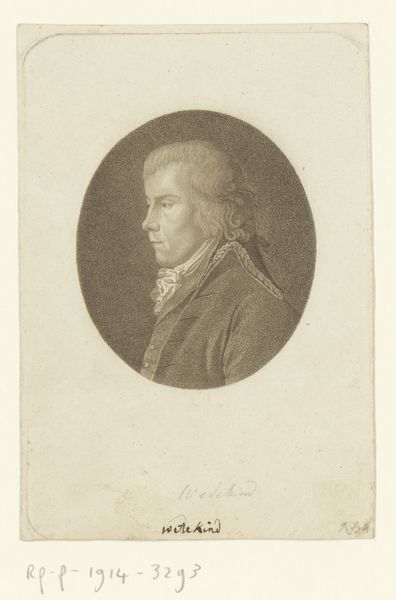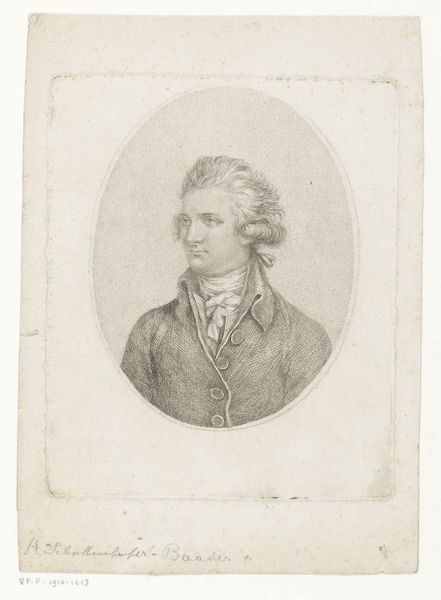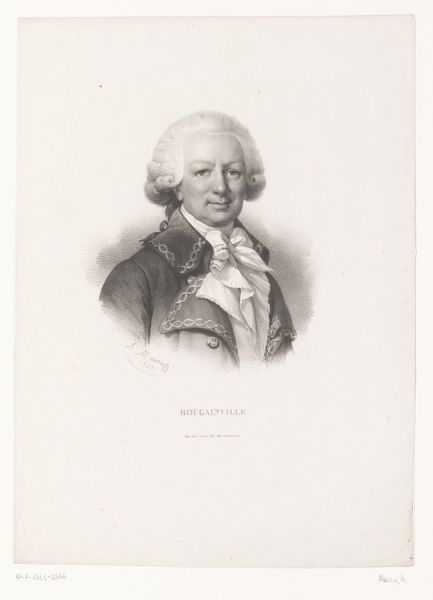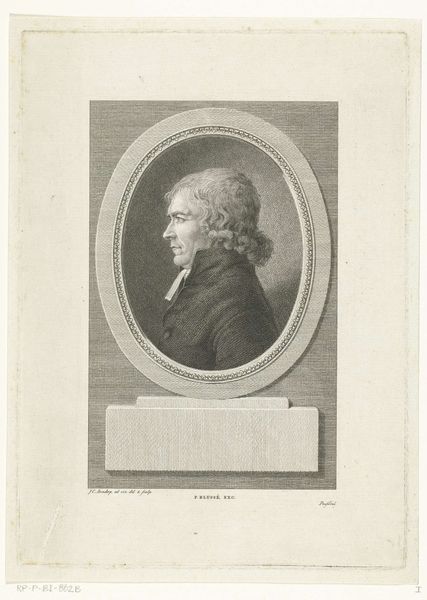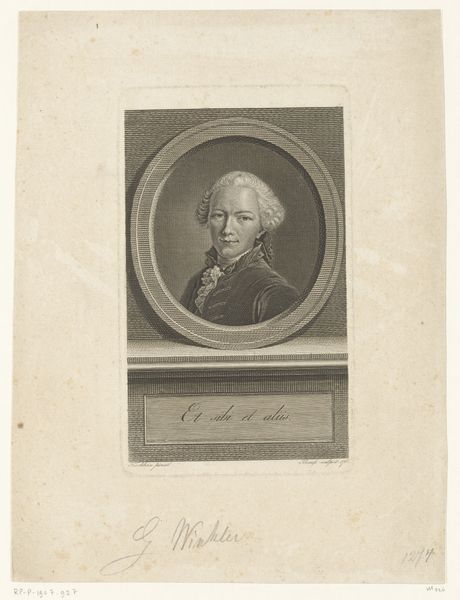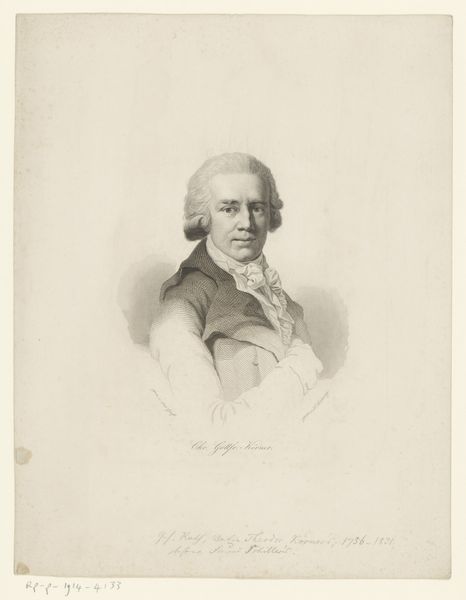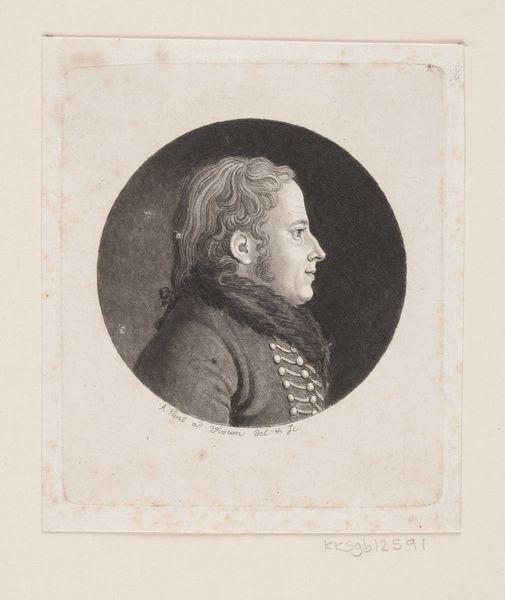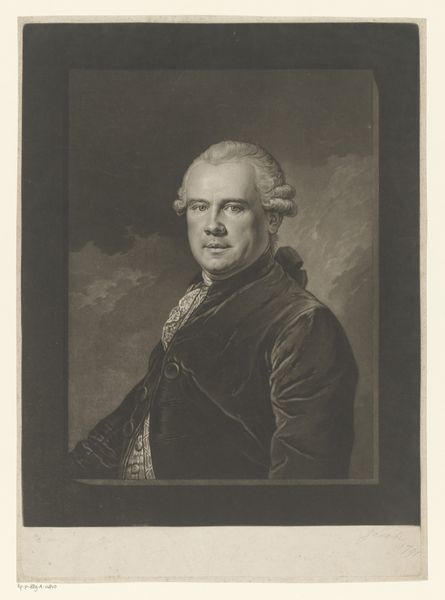
drawing, engraving
#
portrait
#
drawing
#
neoclacissism
#
historical photography
#
line
#
history-painting
#
engraving
Dimensions: height 249 mm, width 172 mm
Copyright: Rijks Museum: Open Domain
Curator: The piercing gaze in this engraving is immediately arresting. What are your initial thoughts? Editor: There is something very self-assured in the figure's direct address of the viewer, even a touch confrontational. Curator: Precisely. What we are viewing is Guiseppe Longhi's rendering of Andrea Appiani, an artist who lived between 1776 and 1831. It’s a particularly fine example of Neoclassical portraiture rendered as a drawing. Longhi used engraving as his primary medium, achieving incredible detail here through meticulous lines and shading. Editor: It speaks volumes about how portraiture functioned then, doesn't it? Beyond just capturing likeness, it's presenting a very particular identity, very aware of how it’ll be seen. The choice of the medium, drawing, aligns with the Neoclassical values of clarity and line. Curator: Exactly! In that era, engravings such as this helped circulate images of important people and artworks, effectively shaping the cultural landscape and reinforcing Neoclassical ideals. It's about portraying someone as virtuous and contributing to public life. Appiani, being an artist himself, understood that game completely. Editor: The limitations of the black and white engraving almost heighten that effect. Every shadow, every carefully placed line becomes incredibly meaningful. One has to question who had access to these prints. It implies a selective portrayal and inevitably an elitist distribution of images of power, then, doesn't it? Curator: That's a valid point. These images weren’t made for everyone, and they definitely served a purpose beyond simple artistic expression, reinforcing social structures through visual representation. Longhi clearly situates Appiani as part of a certain intellectual and artistic milieu. Editor: It’s fascinating to consider the implications of the choices made, and what this seemingly simple image tells us about artistic agency, historical power dynamics, and visibility in Neoclassical culture. Curator: A small piece that opens into complex discussions. I'll leave the audience with those thought-provoking questions as they move on.
Comments
No comments
Be the first to comment and join the conversation on the ultimate creative platform.

